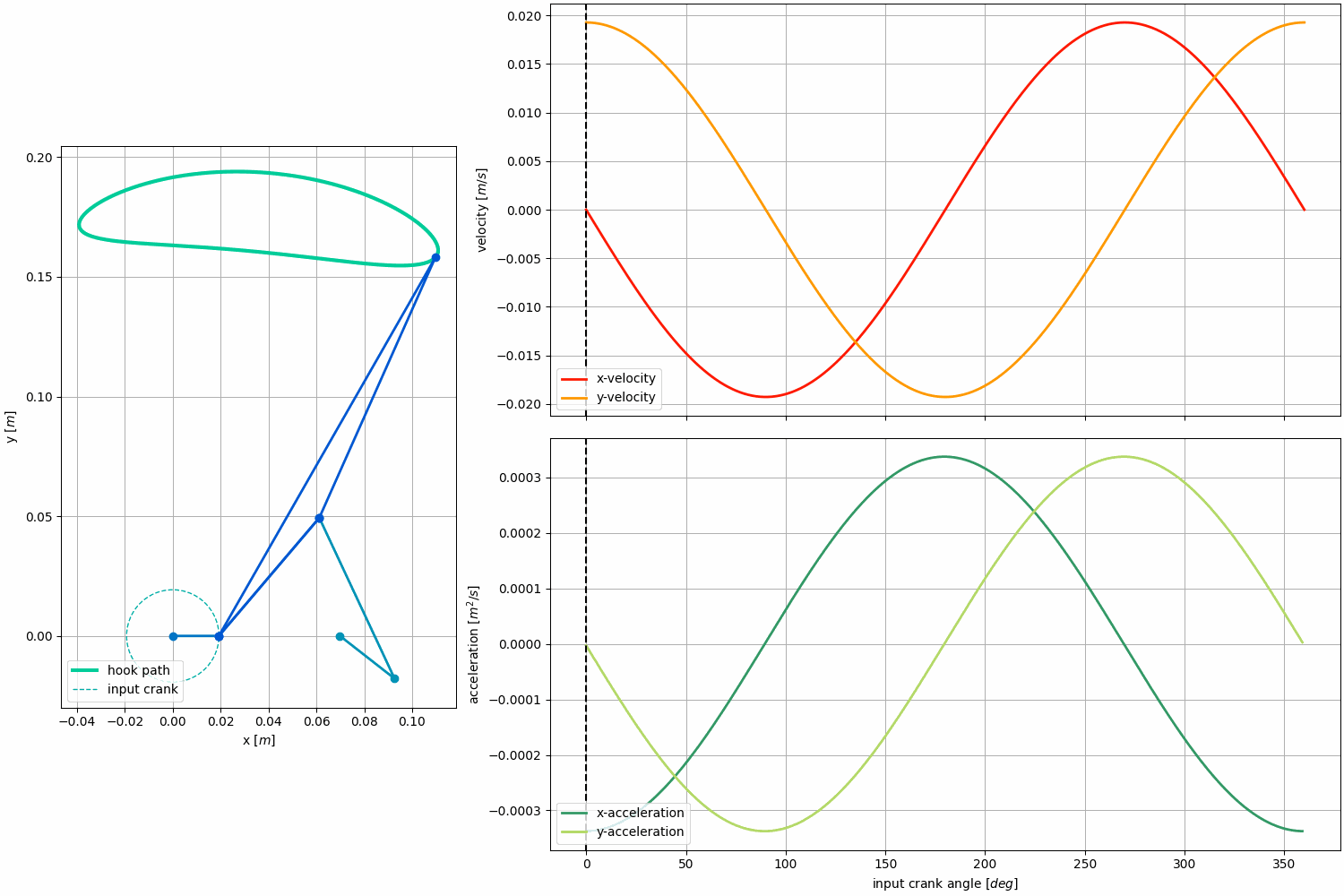Ideal Motion/Force Profile:
The ideal motion profile for this problem statement would have the following properties:
...
The only requirement for the force profile is that the output forces while on the bar are sufficient to move the body.
Mechanism Selection
Two mechanisms have been considered to achieve the desired motion profile:
...
Ultimately, the Klann Linkage was chosen over the pantograph for reasons which will be discussed.
Mobility Calculations:
Klann Mechanism
Gruebler's Equation: 6 links, 7 full joints. DOF = 3 * (6 - 1) - 2 * 7 = 15 - 14 = 1
Grashof: Links 0, 1, 2, and 3 form a 4-bar linkage. Link 1, the input link for the mechanism, satisfies the Grashof condition (class 1).
Pantograph-like Mechanism
Gruebler's Equation: 5 links, 5 full joints, 1 half joint. DOF = 3 * (5 - 1) - 2 * 5 -1= 12-10-1= = 1
The Mechanism has 1 DOF and has less parts compared to the
Kinematic Analysis:
Force Analysis:
We chose to analyze the forces for the Klann Linkage when it is attached to the bar because this is the only time when the linkage experiences significant forces at the end effector.
Interesting Mechanism Features:
The individual Klann Linkage includes an important feature which allows the robot to unhook itself from the bar while simultaneously hooking on to the next bar. This small lifting action is visible in the Kinematic path animation. However, this action must coincide with another arm's hooking action, so as to transfer the weight from one arm to the next. The final requirement of the motion profile complicates this process. This requirement states that "the end effector returns to its initial position along a lower path to avoid colliding with other bars." This "lower" path is bound to be longer than the upper path, thus the end effector takes longer to return to its forward position than the next bar takes to reach it's rear position.
...
- the end effectors approach the bars from underneath (in front of the bar), raise above the height of the bar, then come down and back to hook onto the bar
- there is a slight upward lift of the end effector as it unhooks from the bar
- during the return motion of each end effector (while it is not hooked to a bar), its path never crosses over any of the subsequent monkey bars
Animation:
3-Phase Klann Linkage Simulation (axes in meters) source code
...







